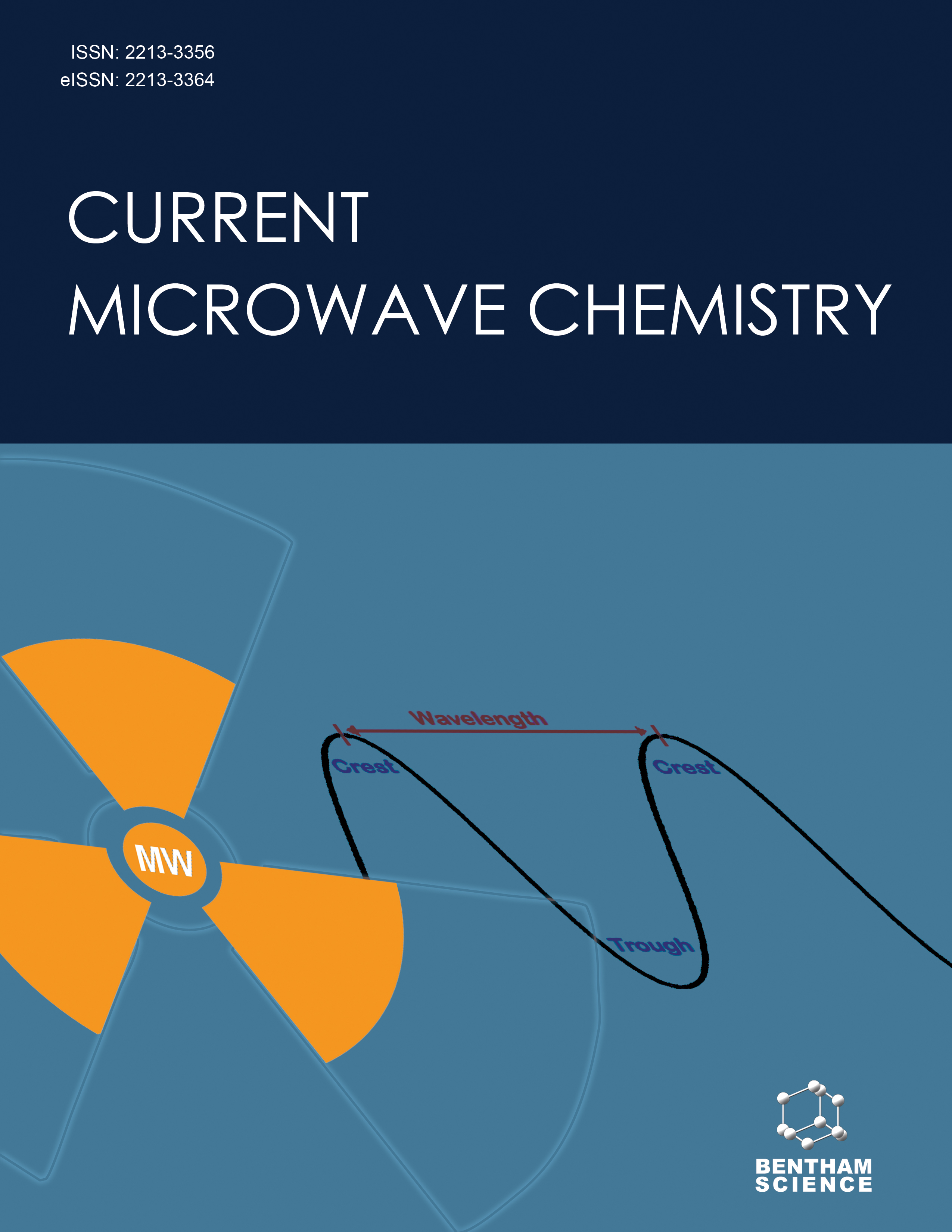- Home
- A-Z Publications
- Current Microwave Chemistry
- Previous Issues
- Volume 7, Issue 3, 2020
Current Microwave Chemistry - Volume 7, Issue 3, 2020
Volume 7, Issue 3, 2020
-
-
Microwave-assisted Homogeneous Gold Catalyzed Organic Transformations
More LessMicrowave chemistry is an emerging area of science mainly focusing on various applications of microwave energy into chemical processes. Microwave irradiation has enormous potential to provide controlled energy directly to the molecules of interest. On the other hand, homogeneous gold catalysis has emerged in the last two decades or so as one of the most promising fields in organic and organometallic chemistry. Its Read More
-
-
-
Microwave-assisted Synthesis of Benzoxazoles Derivatives
More LessAuthors: Musa Özil and Emre MenteŦ#159;eBackground: Benzoxazole, containing a 1,3-oxazole system fused with a benzene ring, has a profound effect on medicinal chemistry research owing to its important pharmacological activities. On the other hand, the benzoxazole derivative has exhibited important properties in material science. Especially in recent years, microwave-assisted synthesis is a technique that can be used to increase diversity and quick researc Read More
-
-
-
Recovery of Metals and Rare Earth Elements by Microwave heating Technology - A Review
More LessAuthors: Shunda Lin, Mamdouh Omran and Shenghui GuoMicrowave heating technology is considered one of the most likely to replace traditional heating methods due to its efficient, quick, and green heating transmission that meets the requirements of sustainable development. Microwave heating can strengthen chemical reactions and change the morphology of minerals, and it can save energy and achieve rapid and efficient heating, clean production, and emission reduction. T Read More
-
-
-
Green Synthesis of Some Novel Imidazole Schiff base Derivatives Under Microwave Irradiation / Reflux Conditions and Evaluations of the Antibacterial Activity
More LessAuthors: Samaneh Eftekhari, Naser Foroughifar, Sara Hallajian and Alireza Khajeh-AmiriBackground: Schiff bases are excellent compounds. They were synthesized by condensation of active carbonyl and amines. They were widely used as a substrate in the preparation of industrial compounds as well as pharmaceutical purposes. They exhibit a wide range of biological activities. In this study, based on the importance of Schiff bases, a sustainable synthetic method was developed employing reflux and microwave irra Read More
-
-
-
DyPO4·1.5H2O Microcrystals: Microwave/Ultrasound/ Ultraviolet Light-Assisted Synthesis, Characterization and Formation Mechanism
More LessAuthors: Mengmeng Li, Shuang Huang, Hang Zhang, Lei Wang and Shengliang ZhongBackground: Researchers have pursued the new synthesis method. As a newly developed method, microwave (MW), ultrasound (US) and ultraviolet light (UV) assisted synthesis has drawn increasing interests. Under the synergistic effect, many materials with new structure, morphology and properties may be found. As an important rare-earth phosphate, DyPO4 was selected and the effect of MW, US and UV on the preparati Read More
-
-
-
Microwave-assisted Green Synthesis of β-Diketone Hydrazone Derivatives and Evaluation of their Antioxidant and Antibacterial Activities
More LessBackground: A series of β-diketone hydrazones have been synthesized via condensation of isoniazid with series of β-diketone. The structures of the Schiff bases are established by elemental and spectroscopic techniques. The prepared compounds were screened for antibacterial and antioxidant potential by DPPH free-radical scavenging activity and Ferric reducing antioxidant power (FRAP) assays. Methods: β-diketone hydrazine d Read More
-
-
-
Significance of Microwave Irradiation in Synthesis of Thiazolidin-4-one Bearing Pyrimidine Analogues: Their in vitro Antimicrobial, Antituberculosis and Antimalarial Studies
More LessAuthors: Navin B. Patel, Hetal I. Soni and Rahul B. ParmarAims: To synthesise biologically active thiazolidin-4-one by microwave irradiation method and evaluate against different species of bacteria, fungi and Plasmodium falciparum. Background: Microwave irradiation method is serviceable for rapid and sustainable synthesis. In this present study, Thiazolidin-4-one bearing pyrimidine derivatives have been synthesized by microwave irradiation method. Objective: Thiazolidin-4-one is Read More
-
-
-
Microwave-promoted One-pot Synthesis of Imidazo[1,2-a]pyridines in Lemon Juice
More LessAuthors: Hani Y. Saeed, Devendra S. Wagare, Mujahed Shaikh and Ayesha DurraniObjective: A simple and highly efficient microwave-promoted procedure for the synthesis of imidazo[1,2-a]pyridine derivatives from the reaction of aromatic ketones, N-bromosuccinimide, and 2-aminopyridines in lemon juice was designed. The main advantages of this protocol, such as clean reaction profile, mild reaction condition, high yield, and minimum reaction time, were compared to other previously developed methods Read More
-
Most Read This Month
Article
content/journals/cmic
Journal
10
5
false
en


